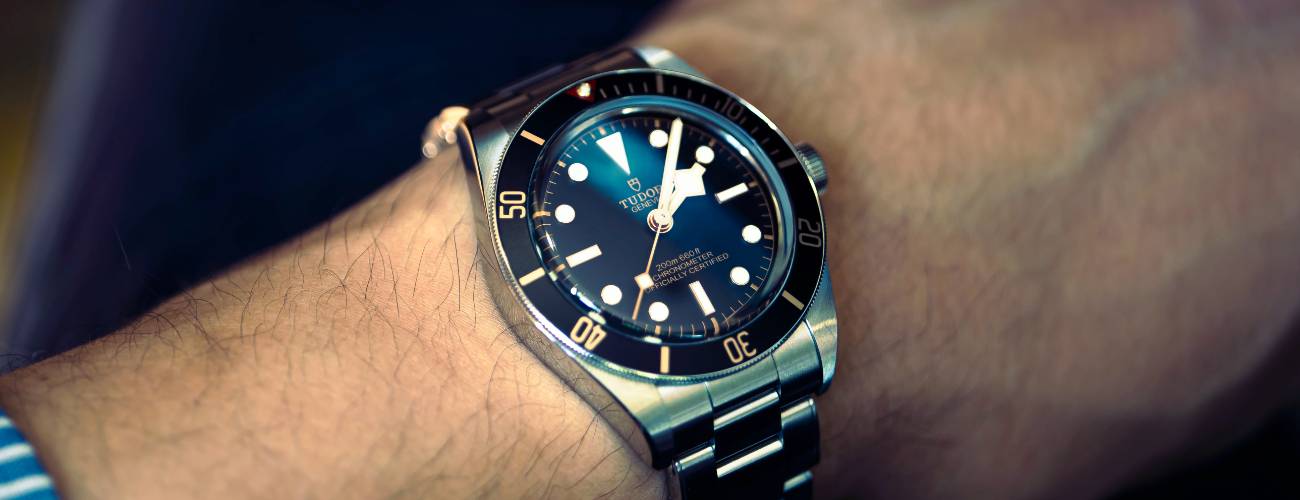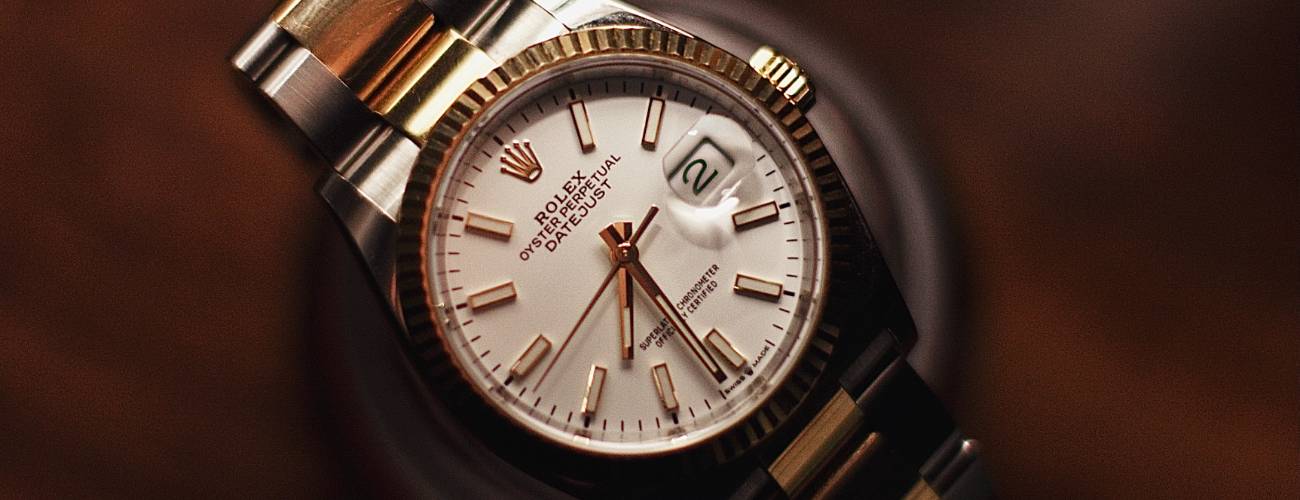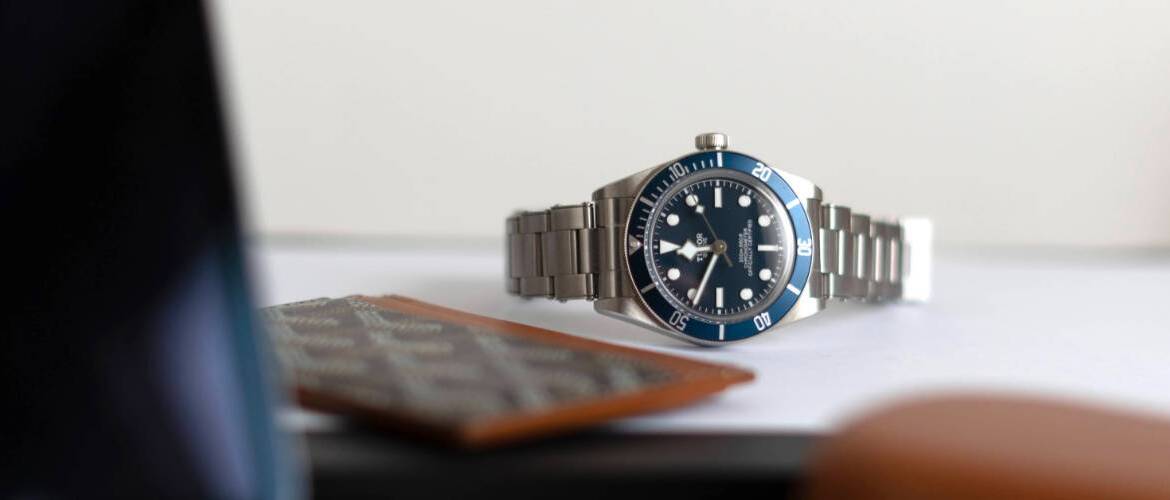Rolex vs Tudor Watches: What’s The Difference Between Them?
In the world of luxury watches, two brands often come up for comparison: Rolex and Tudor. Both have a rich history and a reputation for excellence, but they cater to slightly different segments of the watch market. This article delves into the nuances that distinguish these two prestigious brands.
The Historical Context
Rolex: The Origin of Excellence
Rolex’s journey began in 1905 when Hans Wilsdorf founded the company in London before relocating to Switzerland. Wilsdorf’s vision was to create reliable watches that were not only elegant, but also functional.
Over the years, Rolex has been at the forefront of numerous innovations. The brand introduced the first waterproof wristwatch, the Oyster, in 1926, followed by the creation of the first self-winding mechanism via a Perpetual rotor in 1931.
These groundbreaking developments cemented Rolex’s status in the luxury watch market. The brand’s dedication to precision led to the creation of the Submariner, the first watch waterproof up to 100 metres, and the GMT-Master, designed for international pilots.
Tudor: Born from a Legacy
Tudor was established in 1946 by Rolex founder Hans Wilsdorf, with the intent of creating watches that embodied Rolex’s quality and reliability at a more accessible price point. Tudor initially used off-the-shelf movements for their watches, which allowed them to maintain lower price points.
In the 1950s and 1960s, Tudor gained recognition with its dive watches, like the Tudor Oyster Prince Submariner, offering robustness and reliability akin to Rolex but with distinct design elements. Over the years, Tudor has evolved, carving out its own identity separate from Rolex, focusing on innovative designs and becoming a respected brand in its own right.
⌚️ Check this out: Our Favourite Affordable Tudor Watches.

Design Philosophy and Aesthetics
Rolex: Timeless Elegance
Rolex’s design philosophy is rooted in timeless elegance and understated luxury. Their watches are known for their classic and refined appearance, which has remained largely consistent over the years. Rolex timepieces often feature simple, clean lines, and are made from the highest quality materials like 904L steel, 18ct gold, and precious stones.
The brand’s conservative approach to design changes ensures that each Rolex watch remains relevant and stylish across generations. Iconic models like the Rolex Datejust and the Rolex Daytona are prime examples of the brand’s commitment to elegance and function, blending sophisticated design with technical prowess.
Tudor: Bold and Experimental
In contrast, Tudor’s design ethos is more diverse and experimental. While early Tudor watches shared aesthetic similarities with Rolex, the brand has increasingly differentiated itself. Tudor watches often exhibit a bolder style, incorporating varied textures, materials, and colours. Models like the Tudor Black Bay demonstrate this approach, combining traditional design elements with modern aesthetics.
Tudor also experiments with various case sizes and materials, like bronze and matte finishes, offering a more contemporary and adventurous look. This approach has attracted a younger demographic and those looking for a luxury watch with a unique and modern twist.
Technical Specifications and Innovations
Rolex: The Pursuit of Perfection
Rolex’s commitment to technical excellence is evident in its meticulous in-house manufacturing process. Each component, from the movement to the case and even the alloys used, is produced within Rolex’s own facilities. This commitment extends to their innovative Cerachrom bezel, made from hard, corrosion-resistant ceramic, and the Parachrom hairspring, which offers greater resistance to shocks and temperature variations.
Rolex’s movements are also known for their Superlative Chronometer certification, which surpasses standard chronometer requirements, ensuring exceptional performance on the wrist.
Tudor: Blending Tradition and Modernity
Tudor’s approach to technical specifications and innovations reflects a blend of traditional craftsmanship and modern technology. While Tudor originally used externally sourced movements, recent years have seen a shift towards in-house calibres, such as the MT5602 in the Black Bay.
These movements are robust and reliable, offering features like a 70-hour power reserve and silicon balance springs in selected models. Tudor’s willingness to adopt contemporary technologies while maintaining a commitment to classic watchmaking principles has allowed the brand to offer high-quality, reliable timepieces at more accessible price points.
Price Points and Market Positioning
Rolex: The Epitome of Luxury
Rolex watches are synonymous with luxury and are positioned at the higher end of the market. Prices for a new Rolex start at several thousand pounds and can reach six figures for models encrusted with diamonds or made from rare materials.
The brand’s pricing strategy reflects its status as a symbol of achievement and exclusivity. Rolex’s limited production and the meticulous craftsmanship of each timepiece justify the premium pricing, making a Rolex watch not just a timekeeper, but a luxury item and a status symbol.

Tudor: Luxury Within Reach
Tudor positions itself as a luxury brand that is more accessible than its sibling, Rolex. The pricing of Tudor watches is significantly lower, starting at a few thousand pounds, making them an attractive option for those seeking quality and prestige without the Rolex price tag.
This pricing strategy has allowed Tudor to appeal to a broader market, including younger consumers and watch enthusiasts who appreciate the brand’s unique blend of tradition and innovation.
Collectability and Investment Value
Rolex: A Safe Investment
Rolex watches are not only timepieces but are also considered valuable investments. Their models often appreciate in value over time, particularly limited editions or models associated with significant historical events. The scarcity of certain Rolex models, combined with high demand, can lead to significant increases in their market value.
For instance, vintage Rolex models like the Daytona, Submariner, and GMT-Master have seen remarkable appreciation over the years. This investment potential makes Rolex a popular choice among collectors and investors alike, with many viewing their purchase as a long-term financial asset.
💡 Read more: Why Rolex Watches Hold Their Value.
Tudor: Emerging Collectability
Tudor, while newer to the scene of collectability, is increasingly gaining attention in the watch market. Certain models, like the Heritage Black Bay or the Tudor Pelagos, have begun to garner interest among collectors, thanks in part to their unique designs and historical significance.
While Tudor watches may not yet match the investment returns of Rolex, their growing popularity and more limited production run in certain models hint at a promising future for collectability and potential appreciation in value. This emerging trend is making Tudor an attractive option for collectors looking for the next big thing in watch investment.
After-Sales Service and Warranty
Rolex: Unmatched Service
Rolex is renowned for its exceptional after-sales service. Each Rolex watch comes with a five-year warranty, reflecting the brand’s confidence in its products. Rolex’s global network of service centres ensures that all maintenance and repairs are conducted to the highest standard, using genuine parts.
The brand’s emphasis on service extends to a meticulous overhaul process, where watches are restored to their original functionality and aesthetic condition, ensuring longevity and customer satisfaction.
Tudor: Comprehensive and Reliable
Tudor also offers a high level of after-sales service, with a comprehensive five-year warranty on its watches. This warranty and service commitment mirrors that of Rolex, offering peace of mind to its customers.
Tudor’s efficient service network ensures that maintenance and repairs are conducted with precision and care, using authentic parts. This commitment to customer satisfaction and service quality reinforces Tudor’s reputation as a reliable and trustworthy brand in the luxury watch market.
Summing Up the Distinctions
While both Rolex and Tudor emanate from the same lineage, they cater to different audiences through their distinct design philosophies, technical specifications, and pricing strategies. Rolex remains the epitome of luxury watchmaking, while Tudor offers an accessible path to owning a high-quality timepiece with a unique character. Both brands hold their merit, making the choice between them a matter of personal preference and lifestyle alignment.

